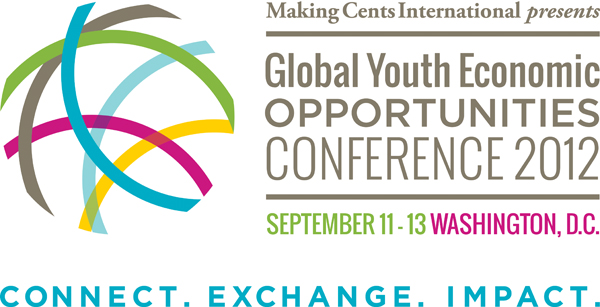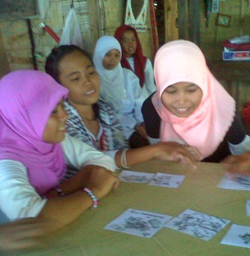Youth Economic Opportunities Conference: How do you target young people effectively?
Insights from the 2012 Youth Economic Opportunities Conference
 September 11-13, 2012 | Washington, DC
September 11-13, 2012 | Washington, DC
This post, originally published on the GYEOC Blog, was written by Diana Rutherford, Research and Evaluation Specialist in FHI 360’s Economic Development and Livelihood Department. Rutherford has been researching child well-being for five years as part of the STRIVE program, funded by USAID’s Displaced Children and Orphans Fund and managed by FHI 360.
 Understanding how children and youth spend their time is crucial for designing effective development interventions that improve their well-being. Child time-use studies provide a tested way of shedding light on this essential topic. Perception of time varies by culture, gender, and age; youth perceive time differently than adults. The value attributed to how youth spend their time often differs among cultures. For example, in many societies girls tend to engage in home-based, non-economic chores, while boys engage in economic labor away from home. Economic labor is often more highly valued than the home-based labor, profoundly affecting how girls and boys perceive themselves and their value and place within the household. The interdependence of people within the household and the value placed on their work (at home, away from home, economic or not) influences well-being. Young people often value work in the same way they perceive that their parents do.
Understanding how children and youth spend their time is crucial for designing effective development interventions that improve their well-being. Child time-use studies provide a tested way of shedding light on this essential topic. Perception of time varies by culture, gender, and age; youth perceive time differently than adults. The value attributed to how youth spend their time often differs among cultures. For example, in many societies girls tend to engage in home-based, non-economic chores, while boys engage in economic labor away from home. Economic labor is often more highly valued than the home-based labor, profoundly affecting how girls and boys perceive themselves and their value and place within the household. The interdependence of people within the household and the value placed on their work (at home, away from home, economic or not) influences well-being. Young people often value work in the same way they perceive that their parents do.
Knowing where youth are and when: When designing youth-focused programming, one key step is to understand where the target beneficiaries are throughout the day, so as to know when and where to engage them. Some labor youth engage in is designed to limit their autonomy (“keep them busy and out of trouble”). Other activities, despite being labeled as labor, provide outlets for young people to interact with people their own age with limited or no supervision. Fetching water or going to the market are two common examples. How the target beneficiaries value their time and perceive their freedom to make choices (personal agency) will affect their interest, willingness and ability to partake of project activities designed to benefit them.
The best source of information about time-use is the youth themselves. Children as young as eight can work together in groups to describe how they spend their time. With youth groups, a facilitator can provide a framework and instructions before stepping away to provide the youth space for private discussion.
Tools for measuring time-use: While there are several time-use tools, a quick, efficient tool for measuring how youth spend their time is through participatory rapid appraisals, which use mapping and day/time grids and photos or drawings of places and activities. The STRIVE program has employed this tool successfully in the Philippines with children from households engaged in seaweed farming and weaving. In about one hour, you can understand:
- Where youth are and when
- The routes and means of transportation between locations/activities
- Where and when you might locate your intervention
- Where safety might be an issue
- How your target beneficiaries perceive time and value their current activities
For more information on the importance of child time-use studies, see Ben-Arieh, A. & A. Ofir (2002) "Time for (More) Time-Use Studies: Studying the Daily Activities of Children." Childhood, 9(2), 225-248.


